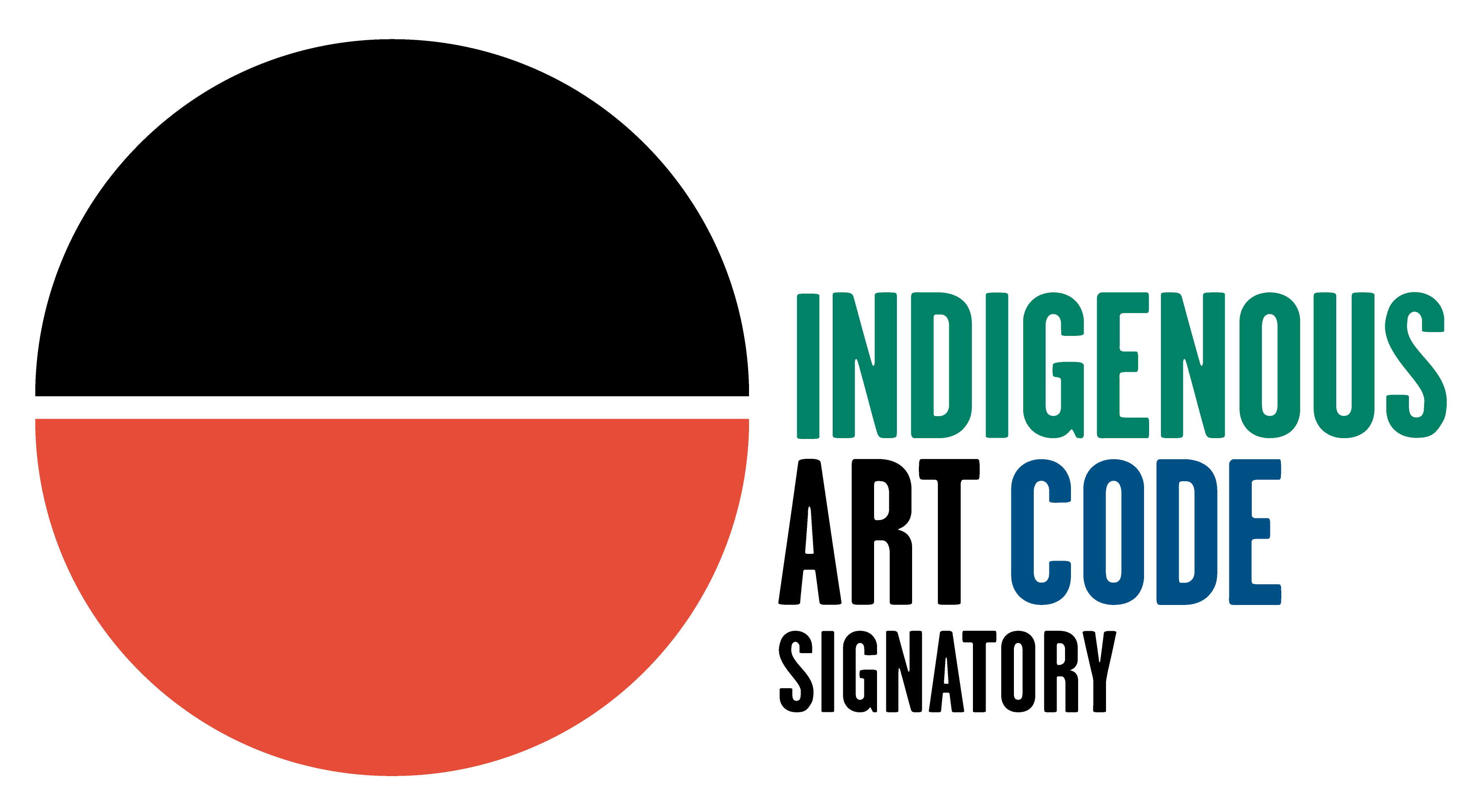Bugai Whyoulter Purungu, b. 1939
35 7/8 x 24 1/8 in
Wantili, which forms the focus of much of Bugai’s work, is a large
round jurnu (soak) and lyinji (claypan) near Well 25 on the Canning
Stock Route. It lies close to Bugai’s birthplace, and is her ngurra
(home country). The area is dominated by claypans surrounded by tuwa
(sandhills). Following rain the typically dry claypans are filled with
water, with the overflow from nearby waterholes flowing to Wantili. At
that time, Wantili becomes an important place for obtaining fresh water
for drinking and bathing. Wantili is significant for the fact that at
this site Kartujarra, Manyjilyjarra, Putujarra and Warnman people would
all come together for ceremonies. Manyjiwa (stones used by women for
grinding seeds) from these times can still be found there today. As
translated by Bugai’s grandson, Cyril Whyoulter: “Bugai always tells
about Wantili because she grew up around Wantili. Her family would
travel between Wantili, Kaalpa, Juntujuntu, Raarki, and Wuranu Wells
along the Canning Stock Route. She paints around Wantili. She saw
whitefellas there for the first time, Canning mob when they were
travelling up and down the stock route with the bullock. She was a young
girl walking around at Wantili. Big mob of people they been walking
around there. Canning and his drovers were travelling, making the road.
They were running away from those whitefellas, watching them from a long
distance. She was a teenager when she was travelling around there with
her four mothers and one daddy. They used to travel around in family
groups, Bugai and Jakayu [Biljabu], and Jakayu’s nyupa (partner) Phillip
Biljabu.”
Bugai returned to the Wantili area as a young woman, when she worked driving cattle along the Stock Route. Wantili
is an incredibly important cultural site, ‘where the creation started.’
The jukurrpa (dreamtime narrative) related to the creation at Wantili
are just for Martu, but the site is open and anyone can go there.
Wantili is also one of the many sites featured in the epic Minyipuru
(Seven Sisters) jukurrpa. The story follows the movement of a group of
women travelling all the way across the desert, beginning at Roebourne
on the coast of Western Australia, as they are pursued by Yurla, a
lustful old man. As the women travelled they stopped to rest at many
sites to eat, dance, rest and sing, on the way leaving behind an
assortment of articles that became formations in the land. The
sisters rested at Wantili before throwing seeds, then continued their
journey on to Tiwa, Jutujuntu, and then Pangkapini, where they finally
escaped Yurla by flying into the sky to become the Pleaides
constellation of stars.
Exhibitions
Outstanding Aboriginal art from 9 regionsOutstanding Aboriginal Art from 9 regions


